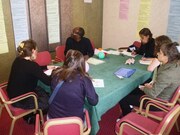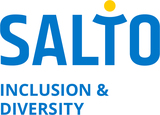Risk assessment
No matter how well prepared you are things can still go wrong, prepare to expect the unexpected. .
To help you cover all (or almost all) eventualities you should always have in your pocket a Plan B, a Plan C, and maybe even a plan D. Think of these plans as your First Aid Kits, how you will deal with those issues that take you by surprise.
Risk assessment is about identifying and managing ALL potential risks. This includes not only physical risks such as the risk of a road traffic accident or lack of access for wheelchair users but also emotional risks such as religious and cultural misunderstandings.
Make a list of all the possible accidents, mistakes, misunderstandings, that might occur during your project, then look at ways in which you could manage the risk of them occurring.
A phone number of a family member for contact in an emergency, Red Cross or Crescent, Police Station or Consulate, a copy of the list of participants, insurance and other relevant documents, or a pre-activity briefing, on participants culture and traditions, with all those involved may be all you need to manage the risk.
On the other hand if you identify what you consider to be situations of high risk, such as a mixed gender activity involving young Muslim women, you may have to seek external advice and permission from parents, take further action or even consider the situation too high a risk to become involved in.
^^ top ^^
Risk assessment is not just about the participants it is also about all the other actors and the project itself. It is important, then, to take all things into consideration when assessing risk, you, and the participants, may consider a multi faith project which includes visits to places of worship a wonderful and challenging experience however their family members may not!
The risk assessment plan should be clearly explained to all actors and displayed prominently throughout the lifetime of the project.
Think empowerment and participation, remember that the participants are the experts on their own realities and are therefore the best starting point in any learning experience. Bring the risk assessment experience to life by engaging the participants in the process .
EXERCISE: Sample Risk Assessment Form
ACTIVITY: Meeting with community and family members to discuss project proposal.
The following gives an example of a physical and an emotional risk. Of course your risk assessment will contain more than two potential risks, these are just to get you thinking!
| situation | hazards | who might be harmed | existing control measures | Assess risk, identify any further action needed | Assors signature |
|---|---|---|---|---|---|
| Meeting held in Muslim faith centre. |
1. Entrance to building is situated on a busy road. 2. Males and females may not meet in the same area. |
1. All participants. 2. Participants belonging to the Muslim faith. |
1. participants will be transported to venue by bus. Bus will drop off passengers at the main entrance. 2. Have made participants aware of the behaviour codes of the Muslim Faith Centre |
1. No further action needed. 2. Inform participants that a further meeting will be held at another venue to share outcomes of meetings. |
> More information on risk assessment can be found in the T-Kit on Project Management and the SALTO Booklet: Going International Opportunities for all.
^^ top ^^
 from TC Empower
from TC Empower
